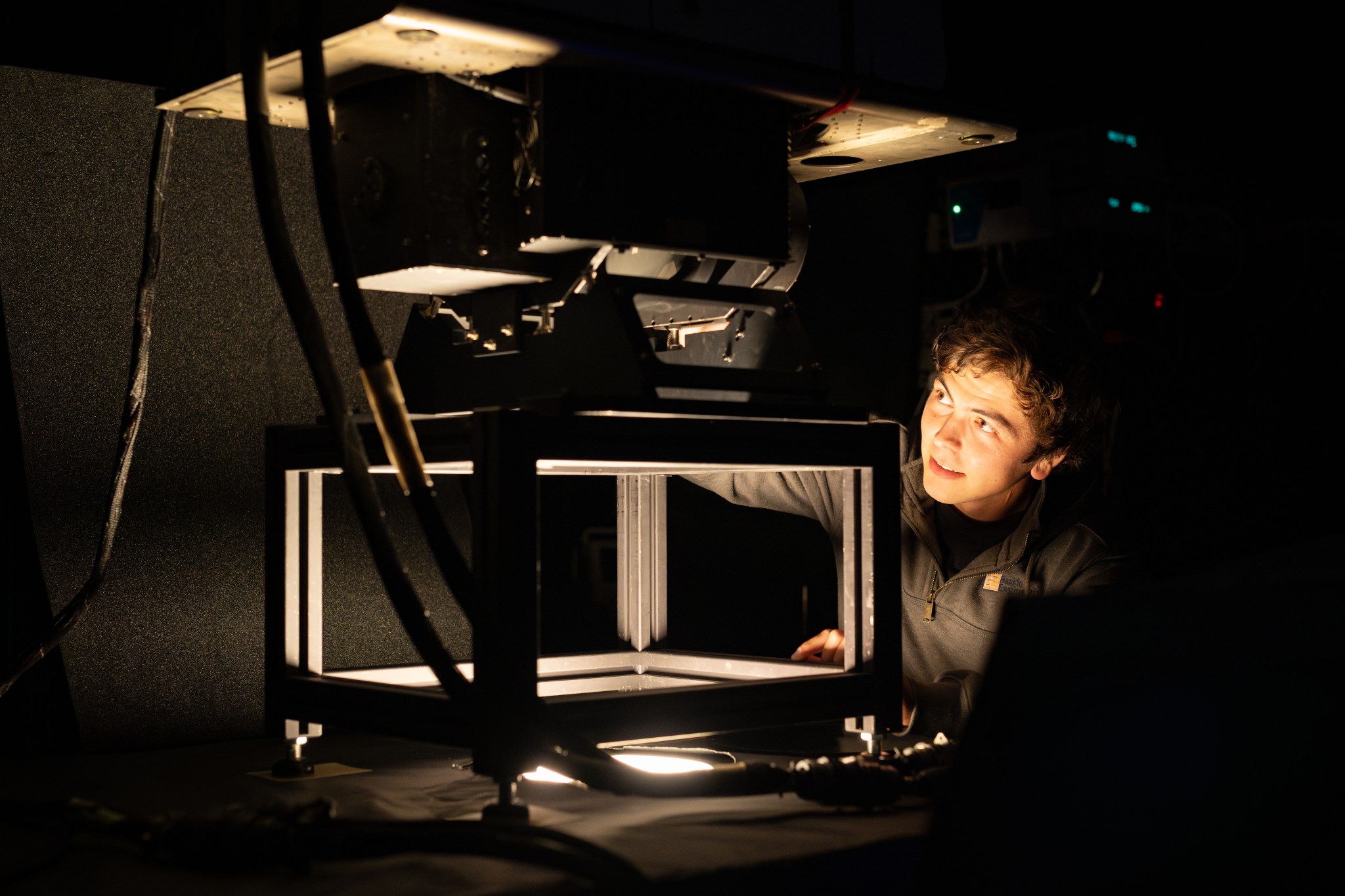2 min read
Preparations for Next Moonwalk Simulations Underway (and Underwater) Electrical engineer Nikolas Gibson performs calibration tests on the MODIS/ASTER Airborne Simulator (MASTER) spectrometer, co-developed by NASA’s Ames Research Center and NASA’s Jet Propulsion Laboratory. Gibson works at the Airborne Sensor Facility at Ames, which builds, maintains, miniaturizes, and calibrates instruments.NASA/Milan LoiaconoNASA’s Ames Research Center in Silicon Valley houses a unique laboratory: the Airborne Sensor Facility (ASF). The engineers at the ASF are responsible for building, maintaining, and operating numerous instruments that get deployed on research aircraft, but one of their most important roles is instrument calibration.
Think of calibration like tuning a piano between performances: A musician uses a tuner to set the standard pitch for each string, ensuring that the piano remains on pitch for every concert.
The “tuners” at ASF include lasers, mirrors, and a light source called an integrating sphere – a hollow sphere about 36 inches in diameter that emits a set amount of light from a hole in the top. By checking an instrument against this baseline between each mission, engineers ensure that the instrument sensors provide accurate, reliable data every time.
In the photo above, electrical engineer Nikolas Gibson performs calibration tests on the MODIS/ASTER Airborne Simulator (MASTER) spectrometer, co-developed by NASA Ames and NASA’s Jet Propulsion Laboratory in Southern California.
A spectrometer separates light into individual wavelengths, providing researchers with information about the properties of whatever is creating or interacting with that light. The MASTER instrument measures about 50 individual spectral channels, providing data on wavelengths from the visible spectrum through the infrared.
When it comes to calibration, each of these channels functions like a specific key on a piano and needs to be individually checked against the “tuner.” By pointing the instrument’s sensor at a known quantity of light coming from the integrating sphere, the team checks the accuracy of MASTER’s data output and repairs or adjusts the sensor as needed.
In this image, MASTER had returned from an April 2025 scientific campaign observing prescribed fires in Alabama and Georgia with NASA’s FireSense project. It was recalibrated before heading back into the field for the Geological Earth Mapping Experiment, or GEMx, mission in late May 2025, which will use the instrument to help map critical minerals across the southwestern United States.
About the Author
Milan Loiacono
Science Communication SpecialistMilan Loiacono is a science communication specialist for the Earth Science Division at NASA Ames Research Center.
Share
Details
Last Updated Jun 11, 2025Related Terms
Ames Research Center's Science DirectorateAmes Research CenterScience InstrumentsExplore More
5 min readNASA F-15s Validate Tools for Quesst Mission
Article 1 day ago 2 min readDr. Natasha Schatzman Receives Vertical Flight Society (VFS) Award
Article 5 days ago 2 min readNASA Provides Hardware for Space Station DNA Repair Experiment
Article 5 days ago Keep ExploringDiscover More Topics From NASA
Missions
Humans in Space
Climate Change
Solar System
Read More Details
Finally We wish PressBee provided you with enough information of ( Tuning a NASA Instrument: Calibrating MASTER )
Also on site :
- Petroleum Ministry activates emergency plan for natural gas supply
- Amazon Is Selling a 'Buttery Soft' $60 2-Piece Set for Just $30, and Shoppers Say It 'Feels Like Spanx Air Essentials'
- Ben Gurion Airport closed until further notice

